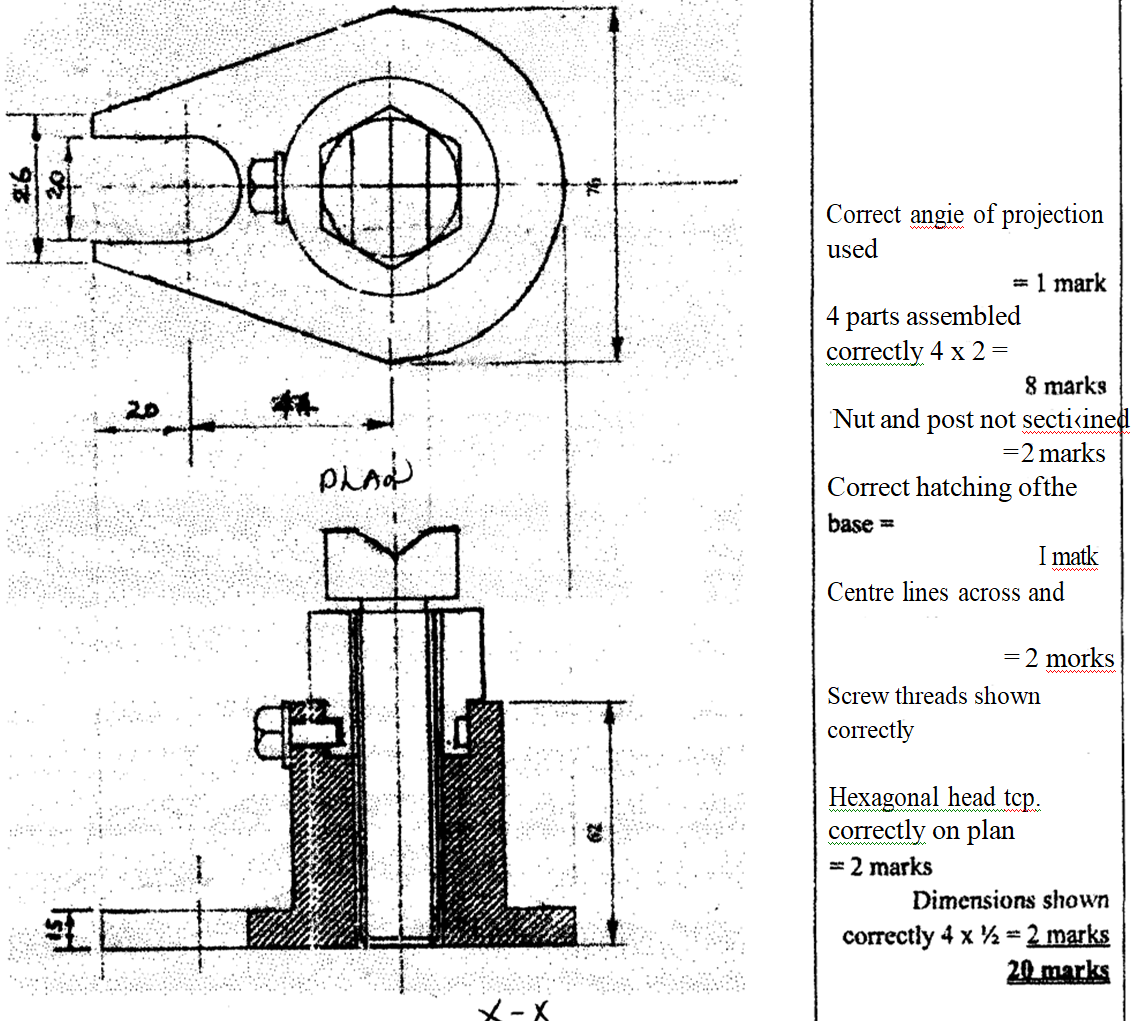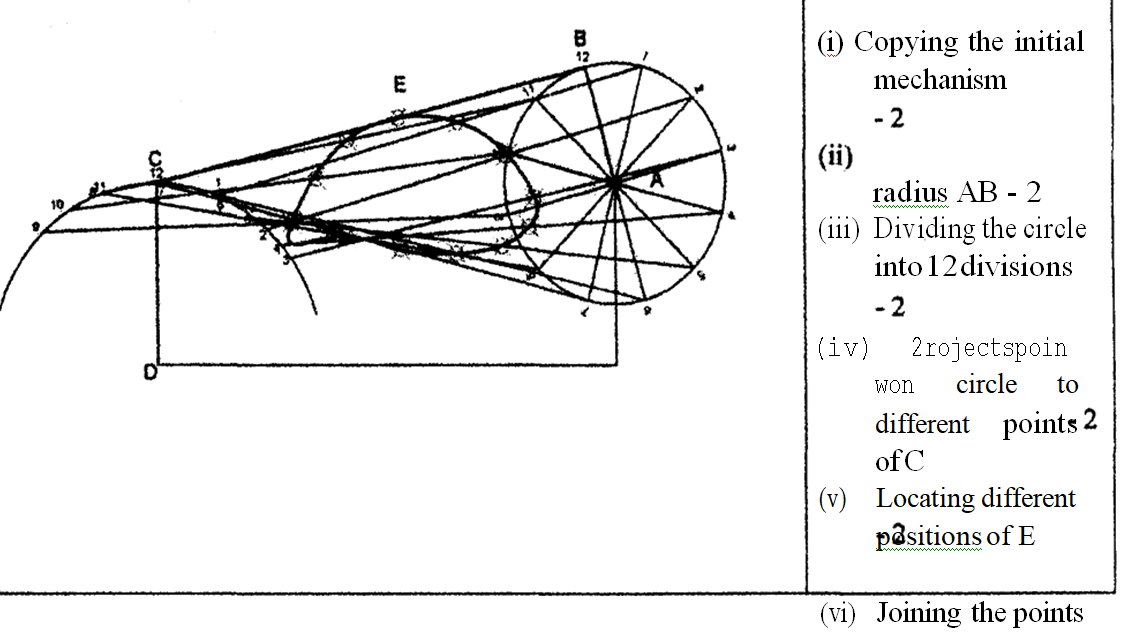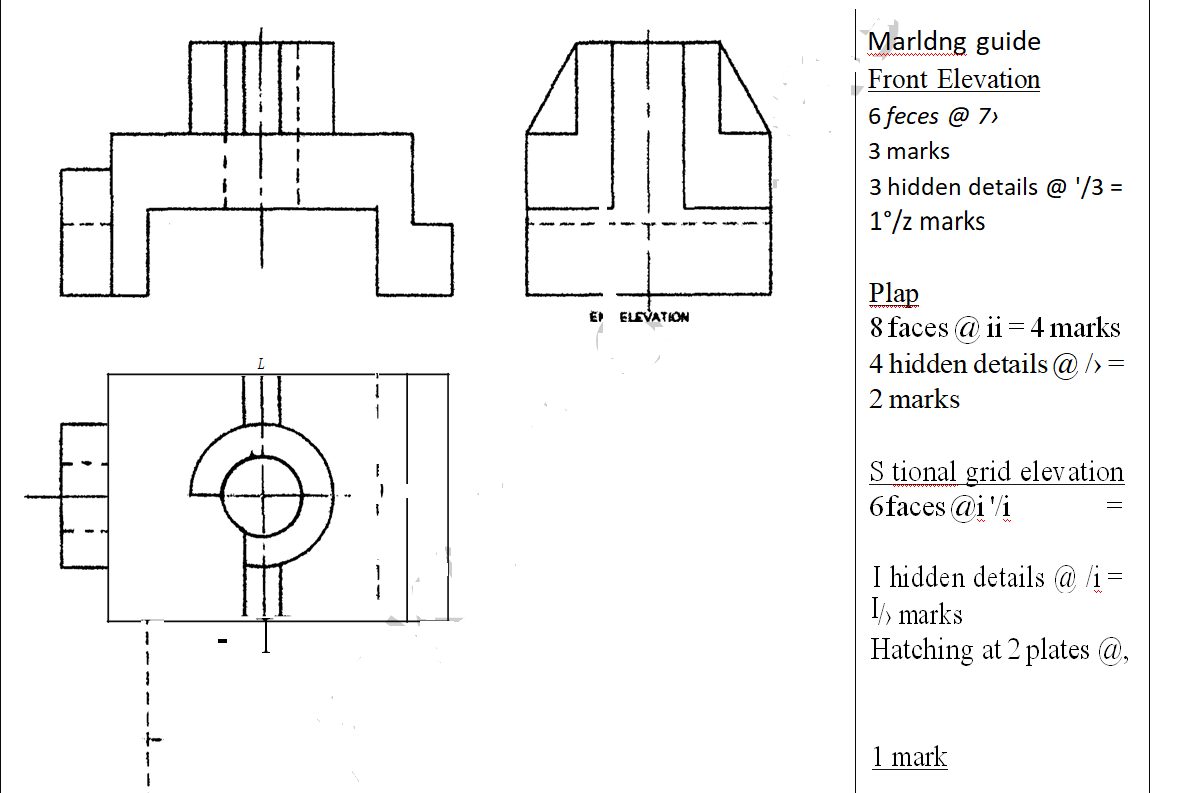2017 KCSE Drawing and Design Paper 1 Past Paper
Section A (50 marks)
Answer all questions in this section on the answer sheet provided.
1 (a) State three roles of the National Industrial Training Authority (NITA). (3 marks)
(b) Name two methods of sharpening pencils leads and state where each is applied in technical drawing. (2 marks)
2 Sketch the conventional symbol for each of the following as used in drawing:(3 marks)
(a) Planned timber.
(b) Third angle projection.
(c) Earth wire.
3 (a) State two advantages of plywood over solid timber. (2 marks)
(b) State two factors that relate to the quality of a design with regard to the following:
(i) Material.
(ii) Proportion.
4 Figure 1 shows a simple shaped block drawn full size in isometric projection. (2 marks)
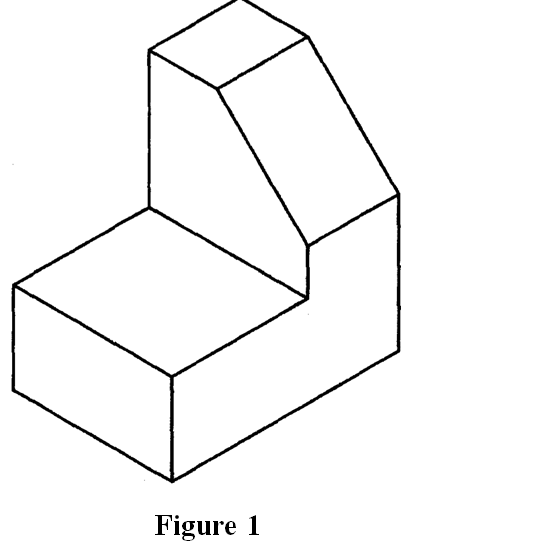
Copy the figure and dimension it fully. (4 marks)
5 (a) State two reasons why care must be taken when storing drawing instruments. (1 mark)
(b) Name four components of a computer and state the use of each. (4 marks)
6 Figure 2 shows a truncated hexagonal pyramid whose distance across corners is 50 mm.

Copy the figure and draw the following:
(a) Complete plan.
(b) Auxillary view as seen in the direction of arrow shown.
7 Construct an involute of a square whose side is 35 mm.
8 Figure 3 shows a diagonal scale.
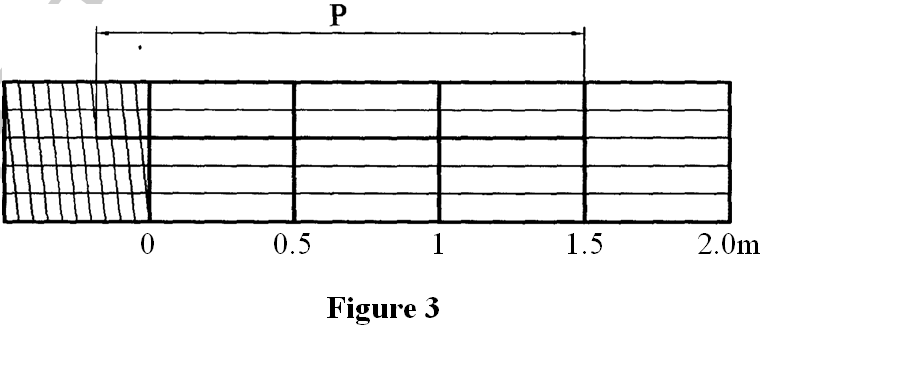
(a) Determine the accuracy of the scale.
(b) Outline the steps to follow in order to obtain reading “P”. (7 marks)
9 Figure 4 shows a shaped block drawn in isometric projection.
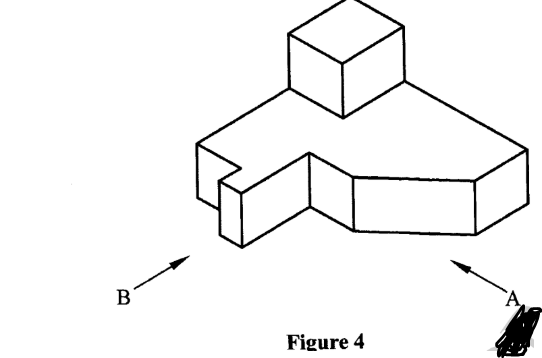
Sketch in good proportion the following views in first angle projection:
(a) Front elevation in the direction of Arrow A.
(b) End elevation in the direction of Arrow B.
(c) Plan.
10 Figure 5 shows two views of a solid block drawn in first angle projection.
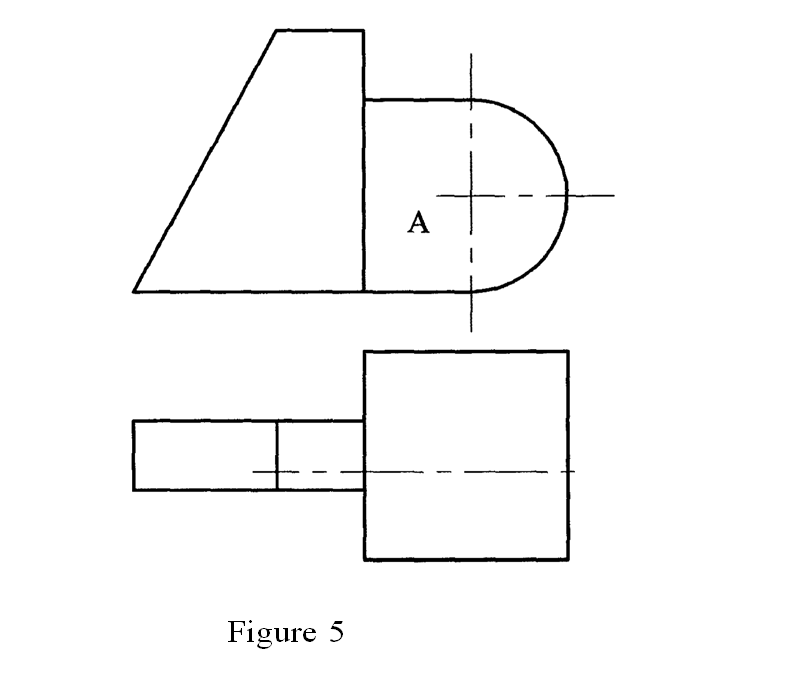
(6 marks)
In good proportion draw the block in oblique projection with A as the front face. (6 marks)
Section B (20 marks)
This question is compulsory.
It should be answered or the A3 paper provided.
Candidates are advised not to spend more than one hour on this question.
11 Figure 6 shows parts of a tool post drawn in first angle projection. Assemble the parts and draw full size the following views in third angle projection:
(a) Sectional front elevation along the cutting plane X-X.
(b) Plan.
Insert four leading dimensions and do not show hidden details. (20 marks)

Section C (30 marks)
Answer any two questions from this section on the A3 paper provided.
12 Figure 7 shows a link mechanism in which AB rotates about A while C oscillates about point D. Plot the locus of point E as AB makes one complete revolution. (15 marks)
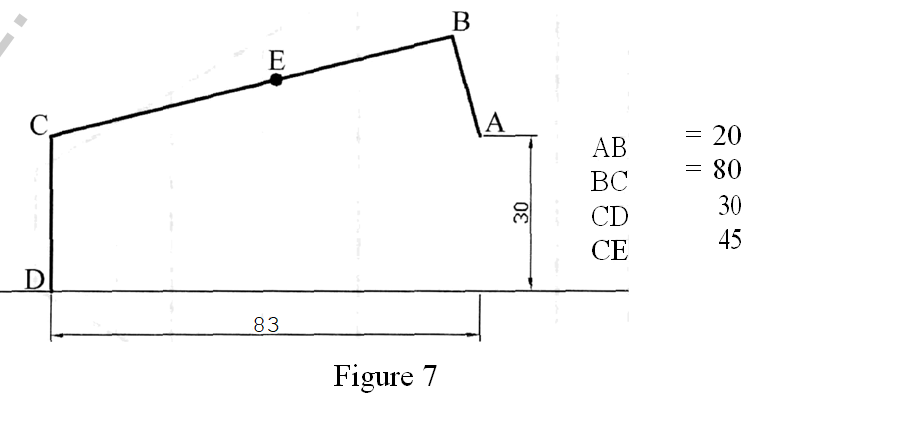
13 Figure 8 shows a machine block drawn isometric projection.

Draw Full Size the following views in first angle projection:
(a) Front elevation in the direction of arrow F.E.
(b) Sectional end elevation along the cutting plane X-X.
(c) Plan. (15 marks)
14 Figure 9 shows the front elevation of a truncated heptagonal prism, whose length of base is 30 mm.
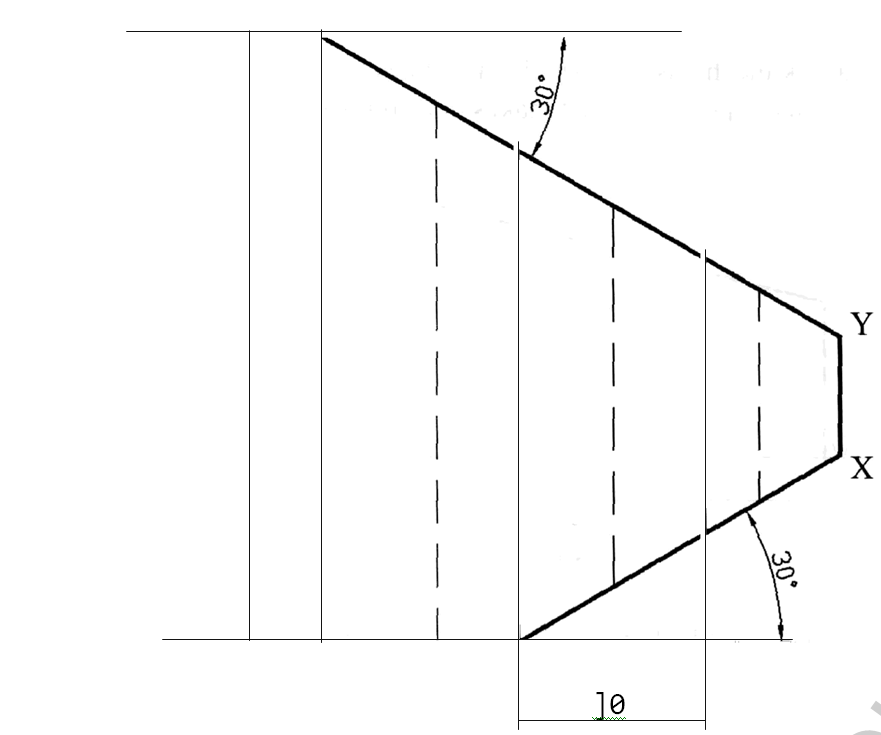
Draw the development of the prism when opened along X-Y. (15 marks)
2017 KCSE Drawing and Design Paper 1 Past Paper-Marking Scheme/Answers
1. (a) Roles of ‘NITA’
(i) Controls training of personnel in the industry.
(ii) Offers technical training in various institutions.
(iii) Examines and certifies various technical trades.
(iv) Controls the type of examinations and certificates to be awarded for Artisan Courses in Kenya.
(v) Gives guidance on the scope of training in the technical fields.
(b) Sharpening pencil leads:
(i) Chisel used with a compass for drawing arcs and circles. Used for drawing of construction lines and guidelines
(ii) Pointed /conical —+ for general purpose e.g. lettering and outlines.

(b) Advantages of plywood over solid timber It is stronger. It can be shaped by folding into intricate shapes. It is available in large sheets. Does not require planning Does not split if nailing is done at the edges.
Factors that relate to good or bad design with regard to:
(i) Material Availability Workability Cost Suitability Safety durability
(ii) Proportion Aesthetics Application Use-ability Ergonomics
4. Drawing with the correct dimensions
1 mark Any 6 dimensions 6×1/2=3 marks

5. (a) Reasons for care when storing drawing instruments. To preserve their accuracy. To avoid breakages that may be occur. For durability thus reducing the cost of replacement. To prevent deformation
(b) Components of a computer Monitor — Displays information to the user. CPU — It is the central processing unit where processing of data and information takes place. Mouse — It is used for selecting, pointing, and highlighting. Keyboard — It is used for capturing and entering numeric and alphabetical commands.
6.

7.
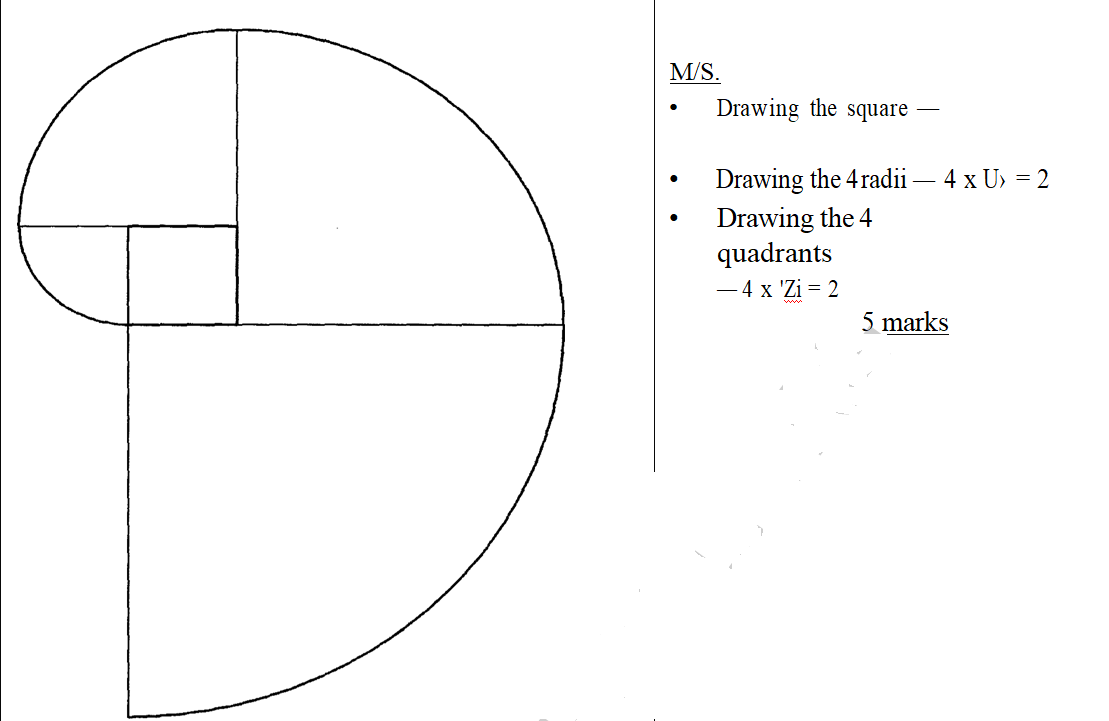
8. (a) The accuracy of the scale is 0.01 m (1cm) Reading ‘P’
– Main reading 1.50m
– 1 Horizontal Div. represents 0 – o osm
9

